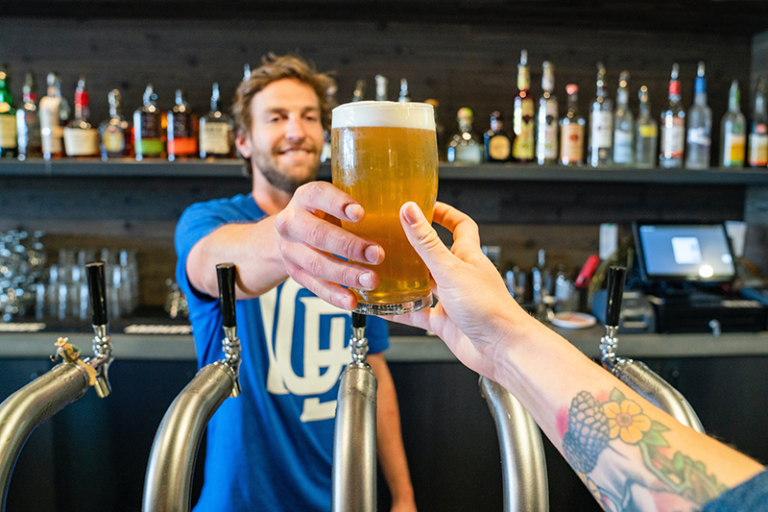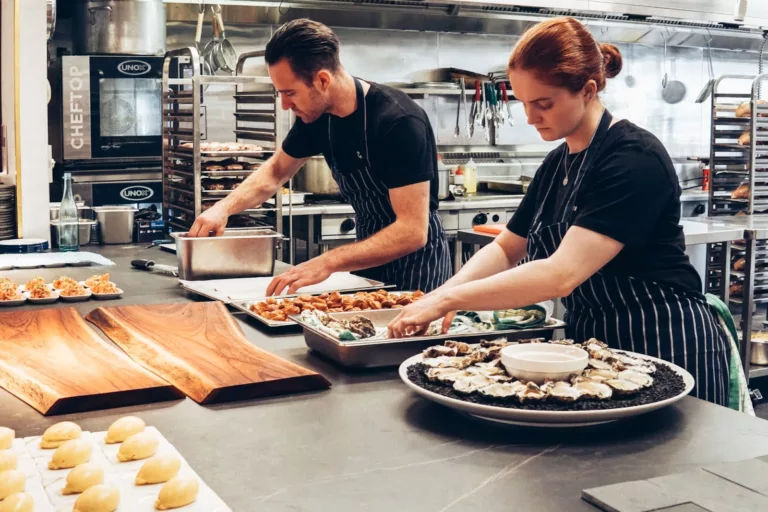What Is a Good Profit Margin for a Restaurant?

If you’re running a restaurant, there are many financial metrics you’ll need to watch closely. These metrics give a true picture of your restaurant’s performance — and can help you make crucial decisions.
And here’s the thing. Profit margin is among the financial metrics you’ll need to keep a tab on.
It’s a no-brainer.
Since you’re in business to make a profit, understanding your profit margin is a survival skill you’ll need to master.
While it’s never uniform, the average profit margin for a restaurant is between 3% and 9%. Of course, this depends on various factors, including the type of restaurant.
This means anything above 15% is excellent.
Read on to discover what profit margin means, the average profit margin per type of restaurant, and a few things that can affect your profit margin.
What Is Profit Margin?
Profit margin is the expression of profits as a percentage of sales. For instance, if your profit margin is 10%, it means for every $100 sale, you’ll keep $10 as profit.
There are several types of profit margins in business. However, when people talk about profit margin, they usually refer to either—
- Gross profit margin — which is gross profit expressed as a percentage of sales, or
- Net profit margin — net profit expressed as a percentage of sales.
To clarify, while net profit is sales minus all business-related expenses, gross profit is sales minus cost of goods sold; the direct costs of producing the product — such as the food material you buy.

What Is a Good Net Profit Margin For Restaurants?
Let’s be honest. A good net profit margin is relative. One person will be happy with 10%. Another will only be happy with 15% — or even 20%.
To determine what constitutes a good net profit margin for a restaurant, it’s crucial to know how different types of restaurants are faring.
The following are average net profit margins depending on the type of restaurant.
Full-service restaurants
Think of these as sit-down restaurants. These are restaurants where patrons enter a building down the street, sit at a table, order food from a menu, and then wait to be served by employed waiters.
A full-service restaurant’s average net profit margin is between 3% and 5%.
As you’ll discover later, full-time service restaurants have some of the lowest profit margins.
The following are some reasons full-time service restaurants often have low-profit margins.
- High overhead costs. This is often because of more extensive menus, larger dining areas, and fewer daily servings, partly because of a low table turnover.
- Higher labor costs. Full-service restaurants typically have higher labor costs because they often have to prepare food whenever a patron makes an order. Also, most fast-food restaurants use pre-prepared food. So, there’s never a need to prepare food every time a patron makes an order. Labor costs for full-service restaurants are often between 30% and 40% of total expenses.
With these in mind, a net profit margin above 5% should be good if you’re running a full-service restaurant. As you’ve seen, this is above the average in the industry.
Fast Casual Restaurants
While definitions are fluid, fast casual restaurants are restaurants where patrons order food items directly from the counter in distinctively casual settings, so to speak. Think of McDonald’s — or burger chain Shake Shack.
Fast casual restaurants are also sometimes called fast food or quick service restaurants.
A fast-casual restaurant’s average net profit margin ranges between 6% and 9%.
As you’ve observed, the average net profit margins for fast-casual restaurants are slightly higher than that of full-service restaurants.
This is because of the following reasons.
- Lower overheads: Fast casual restaurants often have simpler menus and smaller dining areas.
- Lower labor costs: Fast casual restaurants often have lower labor costs. Estimates put this at around 25% of total costs.
Again, while a good net profit margin for a fast-casual restaurant is relative, something above 15% should put a smile on your face.
Catering Service Restaurants
Catering service restaurants are those that work with clients to design tailor-made catering services. These restaurants typically provide services at the host’s designated venue, including cooking and serving.
Catering-service restaurants boast some of the best net profit margins in the industry. These often average 7-8%.
Catering-service restaurants usually post higher net profit margins because they have lower overheads.
For instance, a catering-service restaurant doesn’t need to employ full-time workers. They only engage workers when they have an event coming up. Because of this, their payrolls are relatively thin.
A good net profit margin for catering-service restaurants should start at 15%. To achieve the best returns, you should aim for 20%.
Still, you should remember these are broad guidelines. In the restaurant business, you may run a mix of full-service and catering; hence, the need to modify your expectations accordingly.
Plus, other factors will come into play in determining your a good profit margin.
Factors That Determine Profit Margin for Restaurants
Factors that determine profit margin for restaurants include—
- The type of food and drinks served, including quality.
- The size of the menu.
- The location of the restaurant.
- The size of the restaurant. Because of economies of scale, big restaurant chains often post higher profit margins. For instance, McDonald’s’ average net profit margin is an impressive 29%.
- The cost of labor and ingredients.
- The overall competition in the market.
That’s just about it.
Remember to consistently monitor your net profit margin to pick out its trend and make crucial decisions depending on what you see.
If you want to better understand your restaurant’s net profit margin — or other financial metrics — get in touch with us.



